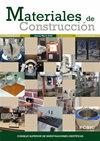Preliminary study on the upcycle of non-structural construction and demolition waste for waste cleaning
IF 1.5
4区 工程技术
Q3 CONSTRUCTION & BUILDING TECHNOLOGY
引用次数: 3
Abstract
This study proposes a method to convert non-structural calcium-rich construction and demolition waste fines into adsorbents of heavy metal ions by mixing waste fines with diammonium hydrogen phosphate solution to produce hydroxyapatite, which has high surface areas and excellent ion-exchange capacity with heavy metal ions. As a result, environmental polluting waste is converted into environmentally cleaning material. Waste putty powders was chosen as the representative waste to investigate the detailed formation process of hydroxyapatite and the key reaction parameters of the reaction. Results showed that hydroxyapatite can be produced on waste putty particles. Higher ageing temperatures or longer ageing duration are beneficial to the yield and crystallinity of the produced hydroxyapatite. Adsorption testing confirmed that Ni2+ can replace Ca2+ in the hydroxyapatite lattice, leading to the formation of a new crystal, arupite (Ni3(PO4)2•8H2O), and contributing to a modest adsorption capacity for Ni2+ (15 mg/g) for the hydroxyapatite-containing waste putty.非结构建筑和拆除垃圾的升级回收用于垃圾清洗的初步研究
本研究提出了一种将非结构富钙建筑和脱模废细粒与磷酸氢二铵溶液混合生产羟基磷灰石的方法,将废细粒转化为重金属离子的吸附剂,该羟基磷灰石具有高表面积和优异的与重金属离子的离子交换能力。结果,污染环境的废物被转化为环境清洁材料。以废腻子粉为代表,研究了羟基磷灰石的详细形成过程和反应的关键反应参数。结果表明,在废腻子颗粒上可以制备羟基磷灰石。较高的老化温度或较长的老化持续时间有利于所制备的羟基磷灰石的产率和结晶度。吸附测试证实,Ni2+可以取代羟基磷灰石晶格中的Ca2+,从而形成一种新的晶体,arupite(Ni3(PO4)2•8H2O),并有助于对含羟基磷灰石的废腻子的Ni2+具有适度的吸附能力(15mg/g)。
本文章由计算机程序翻译,如有差异,请以英文原文为准。
求助全文
约1分钟内获得全文
求助全文
来源期刊

Materiales de Construccion
工程技术-材料科学:综合
CiteScore
3.20
自引率
9.50%
发文量
38
审稿时长
>12 weeks
期刊介绍:
Materiales de Construcción is a quarterly, scientific Journal published in English, intended for researchers, plant technicians and other professionals engaged in the area of Construction, Materials Science and Technology. Scientific articles focus mainly on:
- Physics and chemistry of the formation of cement and other binders.
- Cement and concrete. Components (aggregate, admixtures, additions and similar). Behaviour and properties.
- Durability and corrosion of other construction materials.
- Restoration and conservation of the materials in heritage monuments.
- Weathering and the deterioration of construction materials.
- Use of industrial waste and by-products in construction.
- Manufacture and properties of other construction materials, such as: gypsum/plaster, lime%2
 求助内容:
求助内容: 应助结果提醒方式:
应助结果提醒方式:


